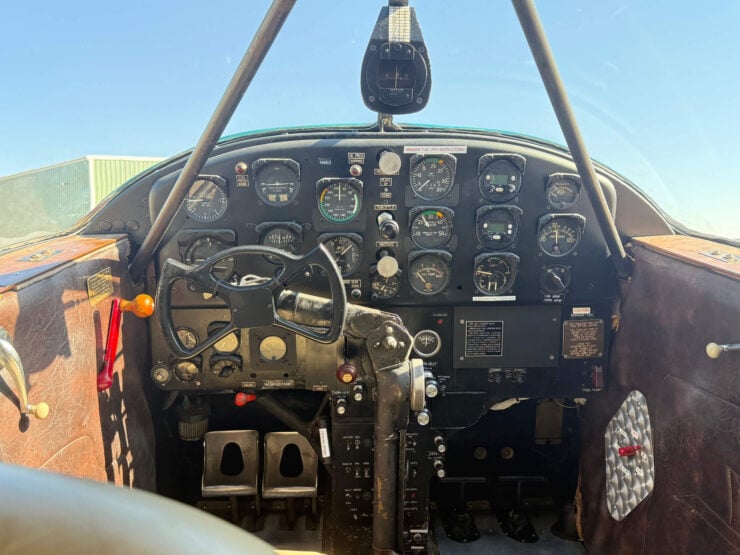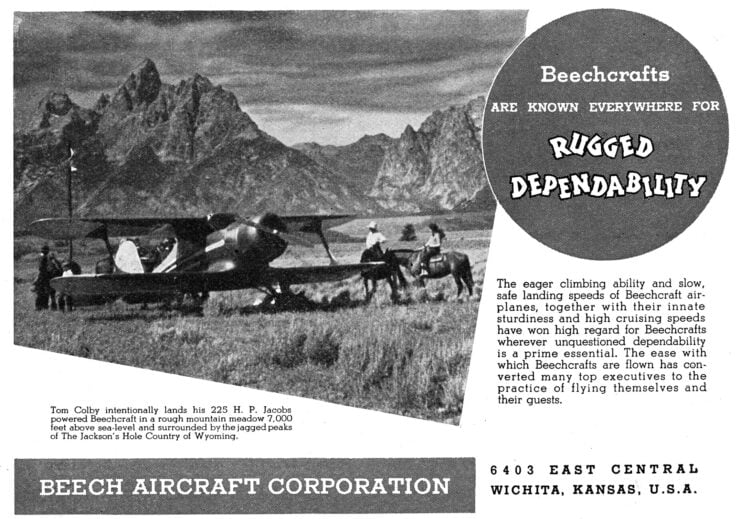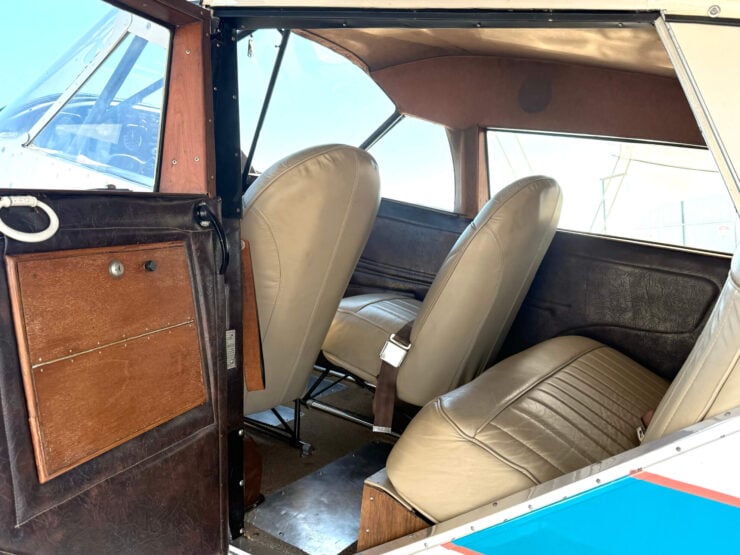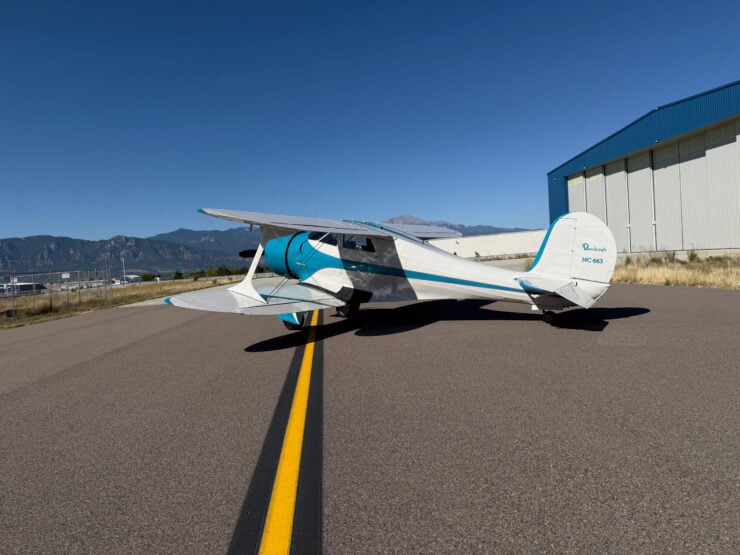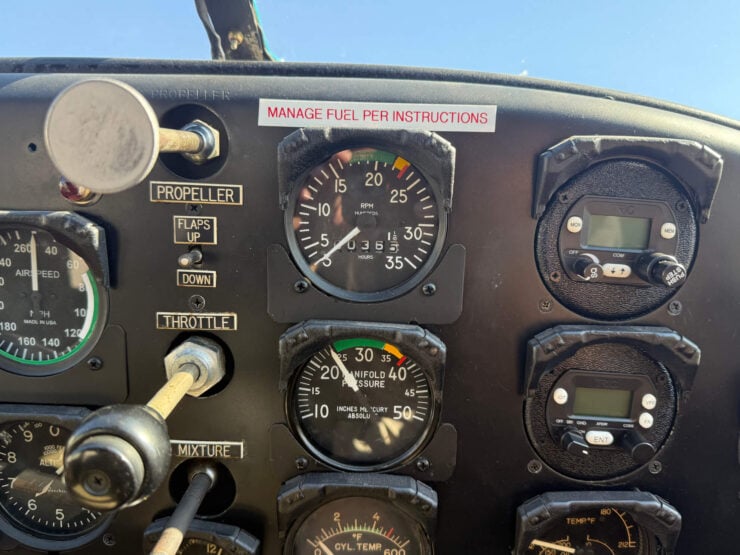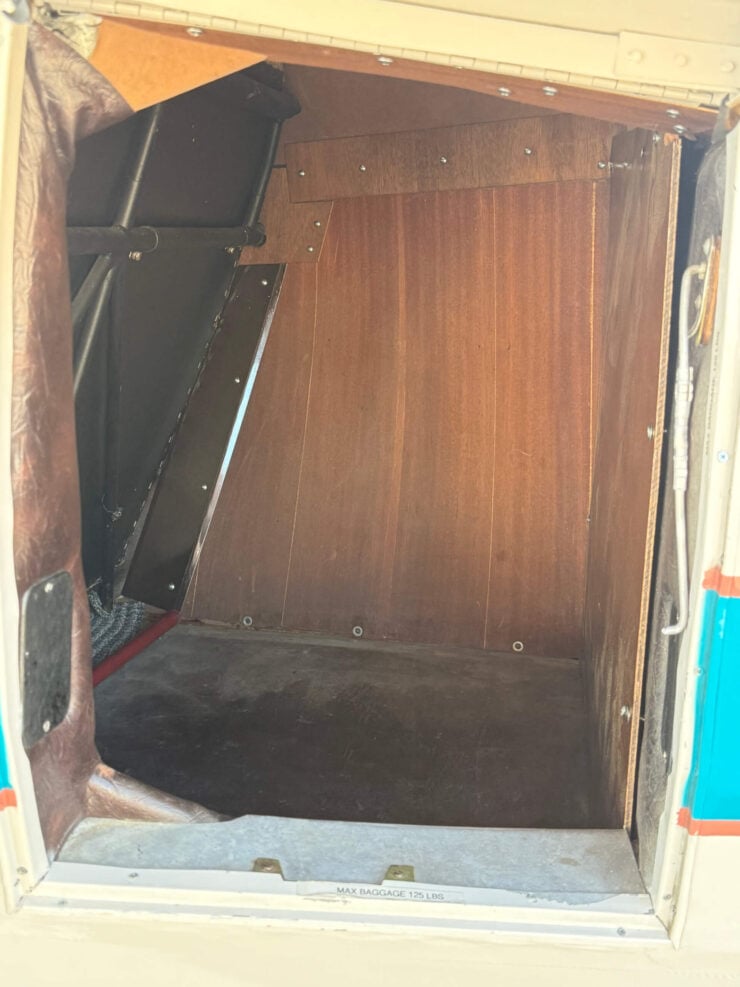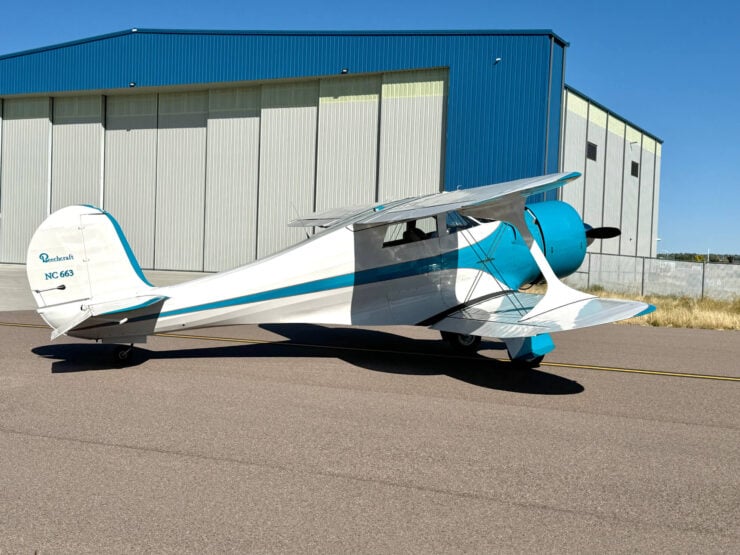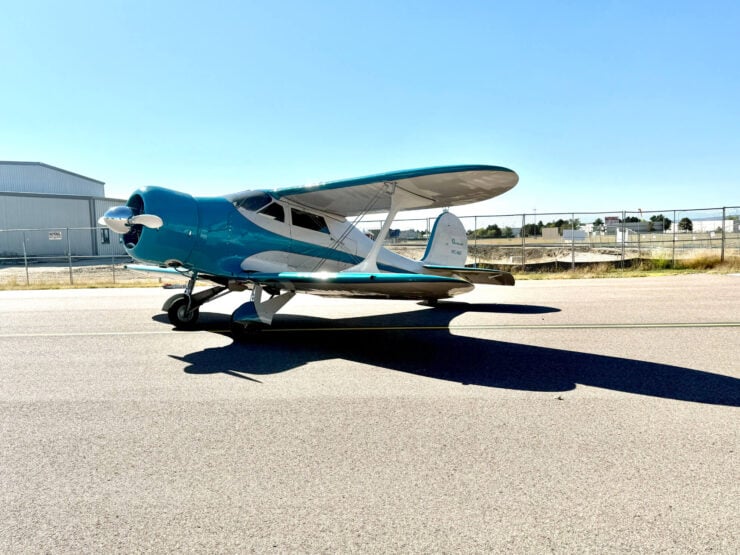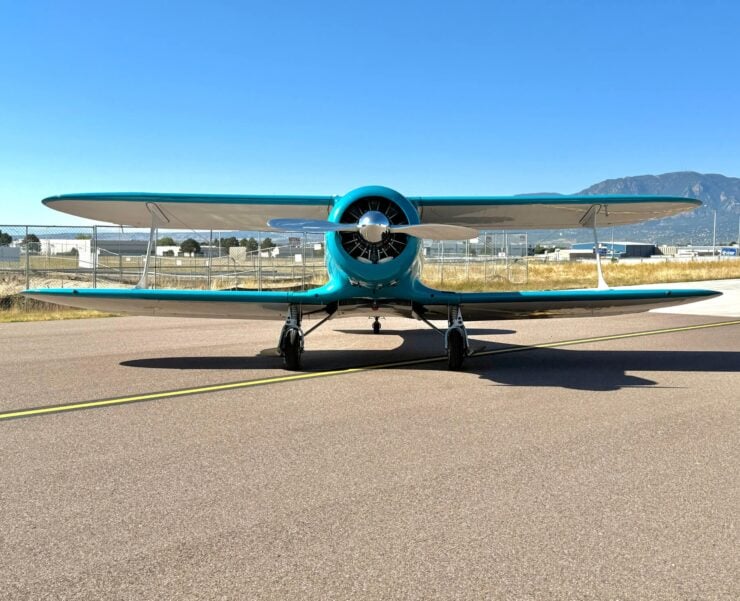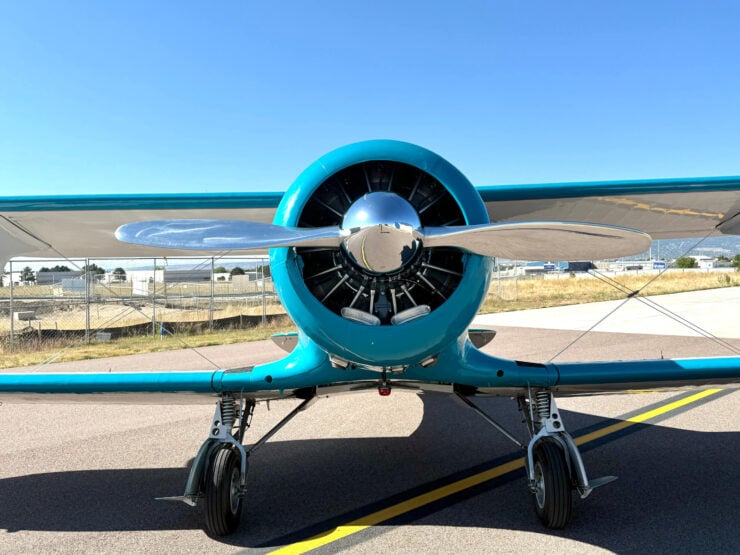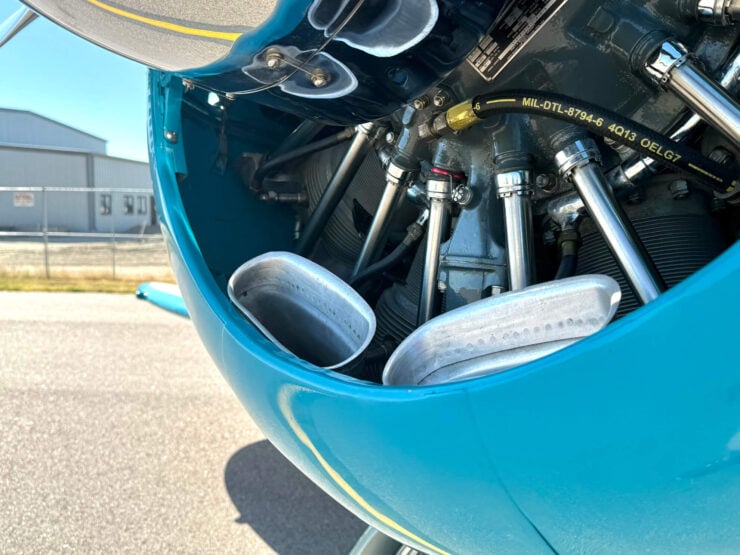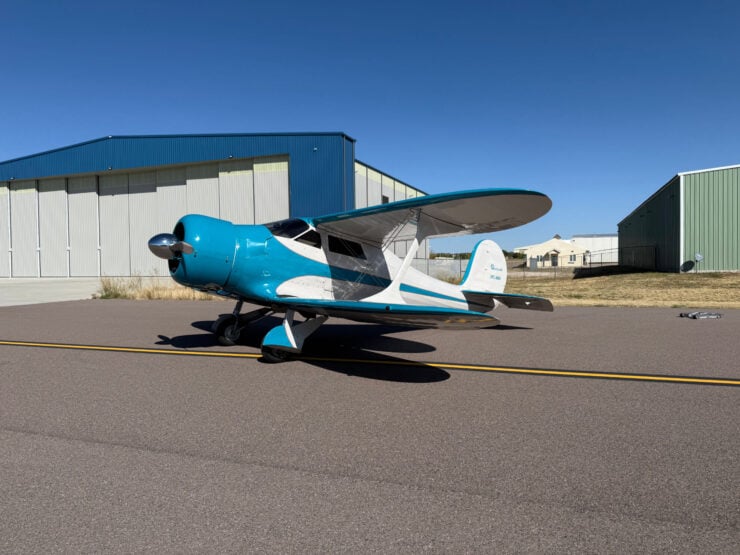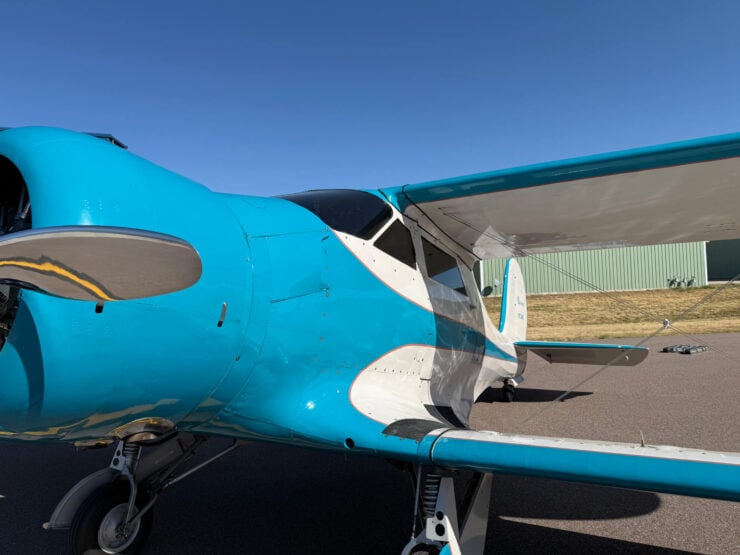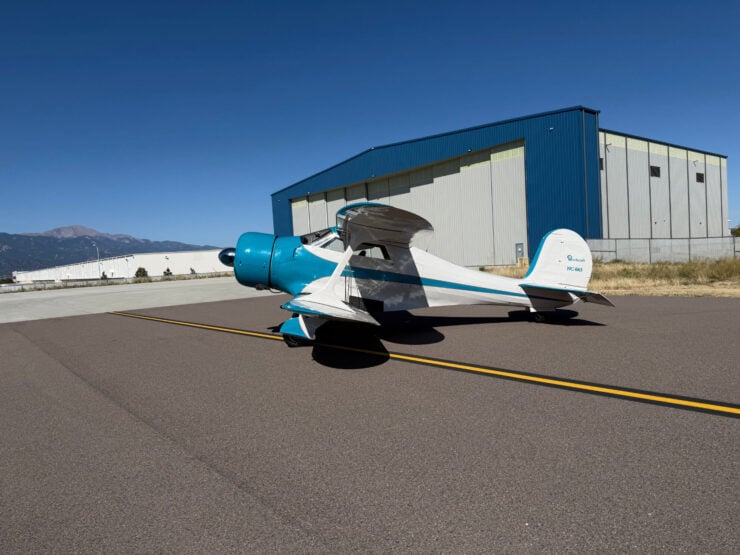This is a World War II-era Beechcraft Staggerwing that benefits from a slew of upgrades, including an overhauled engine and a series of significant improvements throughout.
It’s now being offered for sale out of Colorado Springs with an asking price that is significantly lower than the average house price in the United States – so if you own your own home and you’ve always wanted a Staggerwing, you may potentially have some difficult news to explain to your spouse.
Fast Facts – The Beechcraft Staggerwing
- The Beechcraft Staggerwing, developed during the Great Depression, set new standards for luxury private aviation with its speed, aerodynamics, retractable landing gear, and plush interiors. It first flew in 1932 and quickly became popular among affluent aviators and executives, becoming the period’s equivalent of a private jet.
- Designed by Ted Wells and produced by Beech Aircraft Corporation, the Staggerwing featured a unique lower-wing-forward biplane layout. Though originally intended for civilian use, its high speed and short-field capability made it ideal for early airstrips and later for wartime duties across multiple military forces.
- During World War II, the Staggerwing was designated as the UC-43 by the U.S. Army Air Forces and GB-1/GB-2 by the Navy and Marines. It served in communications, liaison, transport, and even light bombing roles globally. Over 400 were used by the military, operating in theaters from Europe to the Pacific.
- The restored 1943 Beechcraft D-17S for sale in Colorado Springs features modern upgrades like a Jasco alternator and electric fuel pump, with only 37 hours since its last engine overhaul.
The Beechcraft Staggerwing
The Beechcraft Staggerwing is one of the most memorable aircraft designs from the Golden Age of aviation, it represents an era long before computer design, when teams of engineers and draftsmen drew plans by hand, piece by piece, part by part. Developed right in the midst of the Great Depression, the Staggerwing set a benchmark for luxury private aviation – it was essentially a precursor to the modern private jet.
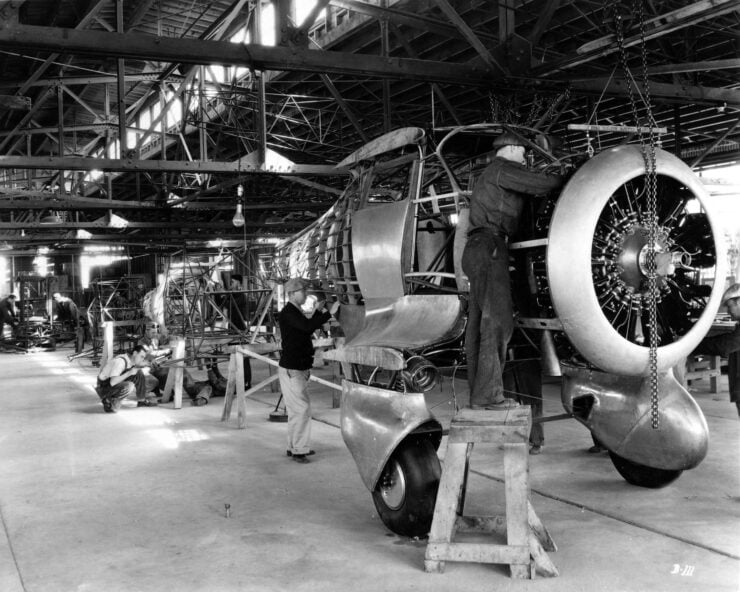

The story of the Beechcraft Staggerwing begins with the formation of Beech Aircraft Corporation. Walter Herschel Beech founded the company in 1932, alongside his wife Olive Ann Beech and engineer Ted Wells. Walter Beech had previously established his reputation as a successful aircraft salesman and executive at the Travel Air Manufacturing Company, which he co-founded with aviation legends Lloyd Stearman and Clyde Cessna.
After Travel Air merged with Curtiss-Wright Corporation in 1929, Walter Beech served as president of its aviation division. Discontented with corporate life, Beech left to pursue his vision of building the highest quality luxury civilian aircraft in the country, and maybe even the world.
The first aircraft that would come out of the then-new Beech Aircraft Corporation was the Model 17. The design of the Model 17 was based on an aircraft that Ted Wells had developed and presented to the board of the Curtiss-Wright Corporation, only to be denied. This denial would be crucial, as it would help convince him to leave with Walter Beech and join the new firm.
The Model 17 was better known as the Staggerwing, due to its distinctive wing arrangement, with the lower wing further forward than the upper wing. This wing placement was designed to improve overhead-visibility for the pilot and to reduce interference drag between the two wings, though later testing showed that it had minimal aerodynamic effect.
The First Flight Of The Staggerwing
The Staggerwing first flew on November the 4th, 1932. Designed by Wells, the aircraft was constructed primarily from wood and fabric, with steel tubing for the main structural section of the fuselage. It comfortably accommodated four to five occupants and quickly won a reputation as one of the fastest civilian aircraft of its day.
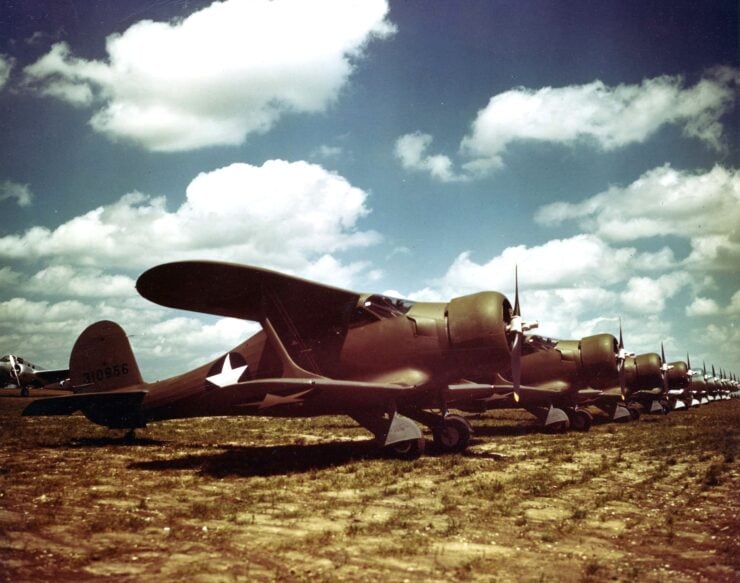


Early Staggerwings were powered by radial engines ranging from 225 bhp to 710 bhp, typically from manufacturers like Wright, Pratt & Whitney, and Jacobs. The Staggerwing achieved speeds up to 212 mph, significantly faster than contemporary civilian aircraft, helped in part thanks to its retractable landing gear which further improved its aerodynamics.
The aircraft was also capable of operating from shorter runways, giving it versatility unmatched by most of its competitors – back at this time the vast majority of landing strips were dirt or grass, typically far shorter than modern runways.
The luxurious interior of the Staggerwing featured leather seats, plush appointments throughout, and good soundproofing by the standards of the time – this all made it popular among wealthy businessmen and well-heeled aviators who valued both the speed and the opulence.
As the 1930s progressed, Beech Aircraft produced a number of variants of the Staggerwing, they were continuously refining the design to improve speed, comfort, and usability in the hopes of staying ahead of the rapidly approaching competition.
The Use Of The Beechcraft Staggerwing During WWII
As World War II loomed, the Beechcraft Staggerwing transitioned from a luxury civilian aircraft into a capable wartime personnel transport, communications, and liaison aircraft. The Spanish Republican Air Force used a number of Staggerwings as impromptu bombers, and China used some as air ambulances in their fight against Imperial Japan.
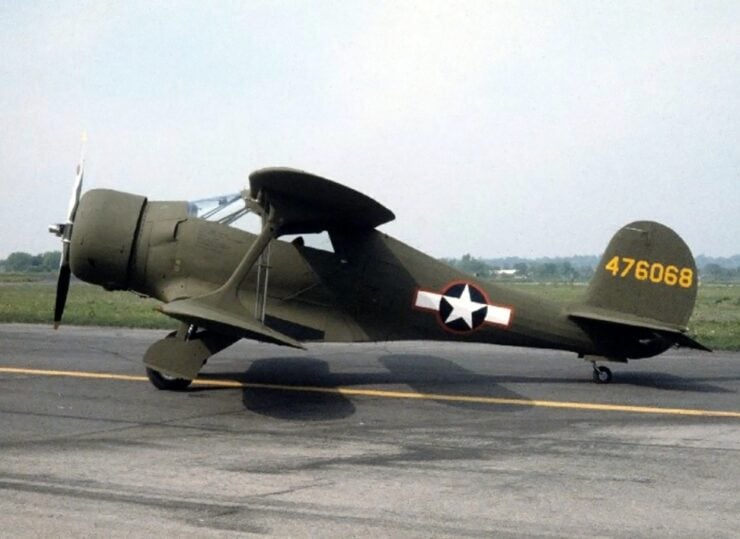


The U.S. military recognized the aircraft’s potential for rapid communication and transportation duties and incorporated it into service relatively quickly.
Designated the UC-43 by the U.S. Army Air Forces and as the GB-1 and GB-2 by the U.S. Navy and Marine Corps, these military Staggerwings became a common sight on airbases – over 400 Staggerwings served in the military during the war, with deployments extending into Europe, North Africa, Asia, and the Pacific theater.
The Life Of The Staggerwing After The War
Following World War II, the aviation market in the United States saw significant changes, shifting away from low-volume, luxurious aircraft toward mass-produced, more economical models. Despite these changes, the Staggerwing remained popular among private pilots who valued performance, and the prestige associated with owning what was by that time a famous aircraft.
Production of the model continued after the war, but the advent of the all-metal Beechcraft Bonanza, introduced in 1947, would gradually overshadow it. Interestingly, the Staggerwing became popular for use in air races – they were often given upgraded radial engines and the interiors would be stripped to reduce weight.
Today, the Beechcraft Staggerwing enjoys a major place in mid-20th century aviation history. Enthusiasts maintain surviving examples in pristine, airworthy condition, and regularly fly them into vintage aircraft events and airshows around the world.
The Beechcraft D-17S Staggerwing Shown Here
The aircraft you see here is an original Beechcraft D-17S Staggerwing from 1943 – meaning it was produced right in the midst of the Second World War. It’s finished in a blue and white paint scheme, and inside you’ll find seating for four.
The engine has a little over 37 hours on it since the last overhaul, as does the propeller, and it has a number of upgrades including a Jasco alternator, an electric fuel pump, a single fuel valve, an Airwolf oil filter, a tailwheel retract spring, Vintage Aerofab gear switches/relays, and a new battery, as well as new tires that were fitted this year.
This Staggerwing is now being offered for sale out of Colorado Springs, Colorado on Platinum Fighter Sales with an asking price of $279,000 USD. If you’d like to read more about it or enquire about buying it you can visit the listing here.
Images courtesy of Platinum Fighter Sales


Articles that Ben has written have been covered on CNN, Popular Mechanics, Smithsonian Magazine, Road & Track Magazine, the official Pinterest blog, the official eBay Motors blog, BuzzFeed, Autoweek Magazine, Wired Magazine, Autoblog, Gear Patrol, Jalopnik, The Verge, and many more.
Silodrome was founded by Ben back in 2010, in the years since the site has grown to become a world leader in the alternative and vintage motoring sector, with well over a million monthly readers from around the world and many hundreds of thousands of followers on social media.


